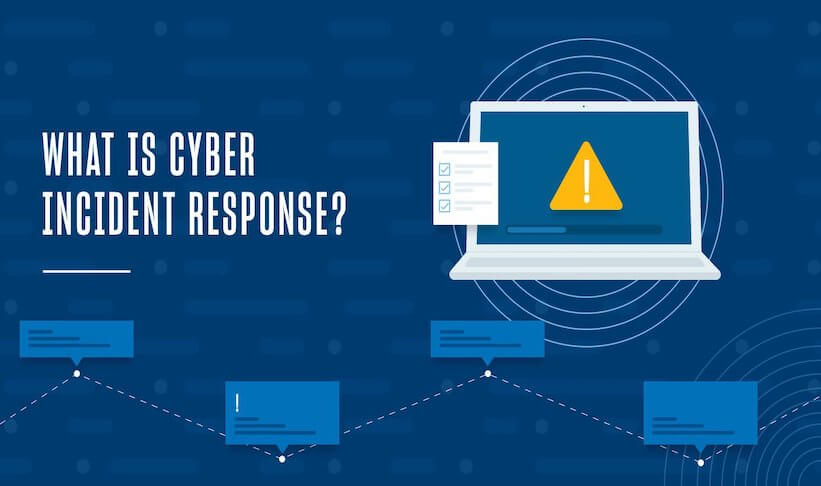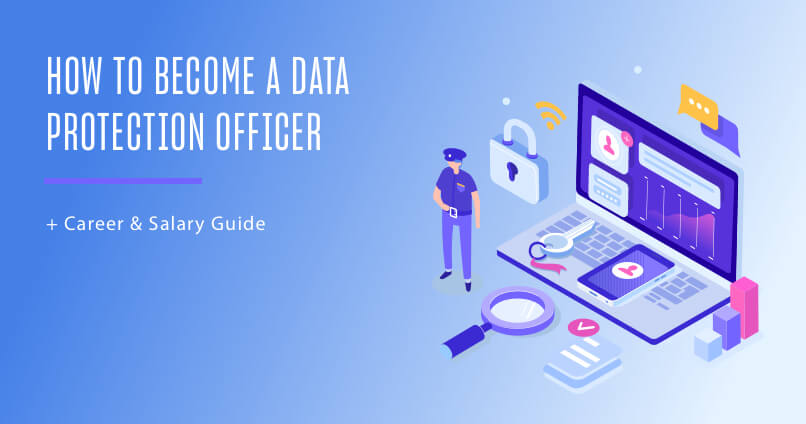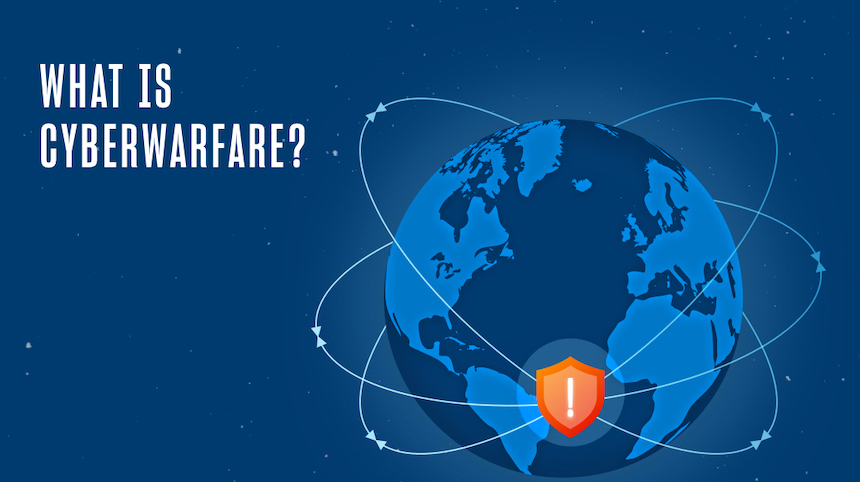A cyber incident is defined as a type of attack or breach that could jeopardize a company or organization’s digital information, integrity and/or network system. Unfortunately, these types of events have become all too common with the global incident response market expected to reach $119.39 billion by 2030.
That’s why it’s more important than ever for businesses and organizations to employ an incident response plan — regardless of their size or industry.
In this guide to cyber incident response, we’ll explore the main components of an incident response plan, the key players you should include on your team and what types of education and experience are needed if you’re interested in working in this important field.
What Is Incident Response?
IBM defines incident response — often called cybersecurity incident response — as “an organization’s processes and technologies for detecting and responding to cyberthreats, security breaches or cyberattacks. The goal of incident response is to prevent cyberattacks before they happen, and to minimize the cost and business disruption resulting from any cyberattacks that occur.”
The National Institute of Standards & Technology (NIST) defines incident response as “the mitigation of violations of security policies and recommended practices.”
What Is an Incident Response Plan?
An incident response plan is just that — a detailed plan of action that dictates how a company or organization will respond to a cyber attack or data breach.
Here is a more comprehensive definition from NIST: “The documentation of a predetermined set of instructions or procedures to detect, respond to, and limit consequences of a malicious cyber attack against an organization’s information systems(s).”
An incident response plan will likely be tailored to each specific business or organization, but the main components will be similar and should include:
- Roles and responsibilities — Are you creating an incident response team, and if so, who are the key players? Do you have skilled cybersecurity specialists or analysts on staff? Will you hire a security consultant to help develop the plan? If you don’t have dedicated cybersecurity personnel, who are your main points of contact in the event of an incident? The plan should detail who is in charge.
- Security solutions — This should address all types of critical hardware and software, including when they were implemented and how often they are updated.
- A business continuity plan — If your company or organization falls victim to an attack or breach, how will you respond? How will operations be restored and resumed as quickly as possible?
- Step-by-step incident response process — This is the heart of the incident response plan, which should provide great detail on the following:
- Detection and analysis
- Containment — What short-term and long-term steps will be taken to contain the incident?
- Remediation and threat removal
- Recovery and the restoration of any systems
- Post-incident review
- Communication — How will you alert consumers, law enforcement officials, stakeholders, leadership and the public about the incident?
- Instructions for collecting documentation — Regardless of whether legal action will be taken, it’s important to detail what types of information should be gathered (and by whom) regarding a breach or attack. This will also help with a post-incident review to determine what, if anything, could have prevented the incident.
An incident response plan is not the only means of preparation and defense against cyber attacks. Businesses and organizations should prioritize continuing education. For example, the Cybersecurity & Infrastructure Security Agency (CISA) offers free cybersecurity incident response training for government employees and contractors (local, state, federal, tribal and territorial government). The SANS Institute provides a 6-day online class: “Advanced Incident Response, Threat Hunting, and Digital Forensics.” Related courses on incident response are also available on LinkedIn.
Why Companies Need a Cyber Incident Response Plan
A cybersecurity incident response plan is a must-have in today’s technological world. This type of documentation and guidance will help organizations and businesses be as prepared as possible in the event of a data breach or cyber attack. Plus, a plan may greatly reduce recovery time.
As UpGuard explains: “Without a formal [incident response] plan in place, organizations may not detect attacks or may not know what to do to contain, clean up and prevent attacks when detected.”
Popular Incident Response Frameworks
A framework is essentially the outline of an incident response plan. You will see the following resources are similar to the incident response plan we outlined above.
- Preparation
- Identification
- Containment
- Eradication
- Recovery
- Lessons Learned
- Preparation
- Detection & Analysis
- Containment
- Eradication & Recovery
- Post-Incident Activity
- Coordination
Key Players on a Cyber Incident Response Team
The people on your team may depend on the size and capacity of your business or organization, but here are some helpful suggestions from Atlassian and AT&T Business:
- Incident Manager or Team Leader
- Lead Investigator
- Tech Lead
- Communications Manager
- Customer Support Lead
- Documentation and Timeline Lead
- Subject Matter Expert
- Social Media Lead
- HR/Legal Representation
Education Needed to Work in Incident Response
There are many available positions in this field; in fact, a recent search for “incident response” jobs on LinkedIn revealed more than 20,000 results.
To work on the front lines of incident response, you typically need a bachelor’s degree in information technology, cybersecurity or a related field. Employers typically prefer 2-3 years of experience in the field. Senior roles may require a master’s degree.
According to InfoSec, you must have at least a Bachelor of Science in computer science, computer forensics or a related field, in addition to relevant experience. This is in addition to hard skills such as knowledge of advanced forensic software, cloud computer, system monitoring tools, eDiscovery tools and more.
Examples of Real-Life Incident Response Situations
There are plenty of real-life examples of incident response:
- In August 2013, Yahoo revealed that hackers had compromised the accounts of 1 billion users, which was later updated to 3 billion users. According to UpGuard, this remains one of the largest data breaches in history.
- Approximately 700 million LinkedIn users (more than 90% of users) were affected during a data breach in June 2021 in which hackers posted consumer data on a dark web forum.
- The Center for Strategic & International Studies keeps an updated list of significant cybersecurity events since 2006 that “focus on state actions, espionage, and cyberattacks where losses are more than a million dollars.”
- Data breaches in 2022 have targeted popular companies and organizations such as North Face, American Airlines, Toyota, Samsung, DoorDash, Twitter, Red Cross, Crypto.com, Marriott and the Costan Rican government.
Frequently Asked Questions
Interested in Advancing Your Incident Response Knowledge and Skills?
Consider furthering your education with the University of San Diego — a highly regarded industry thought leader and education provider that offers two advanced degrees in cybersecurity taught by expert instructors who share insights drawn from relevant industry experience.
The 100% online Master of Science in Cyber Security Operations and Leadership program is designed for career-focused professionals who are interested in gaining a deeper understanding of cybersecurity concepts, topics and theories, along with leadership skills. Students will gain specific knowledge and skills in the areas of technology, law, policy, compliance, governance, intelligence, incident response and management.
USD’s Master of Science in Cyber Security Engineering has been designated as a National Center of Academic Excellence in Cybersecurity. Each CAE-designated program equips students with the necessary skills, knowledge and tools to succeed in cybersecurity.
USD’s Master of Science in Cyber Security Engineering, which is offered both on-campus and online, is ideal for recent graduates and skilled professionals with an engineering background who are currently working in a wide range of cybersecurity roles or aspiring to work as a security engineer. Students will learn about digital and network forensics, the technical considerations for incident response and continuity planning and much more.
If you have any questions — or you’d like to learn more about which program may be the right fit for your career — contact a USD enrollment advisor today.





